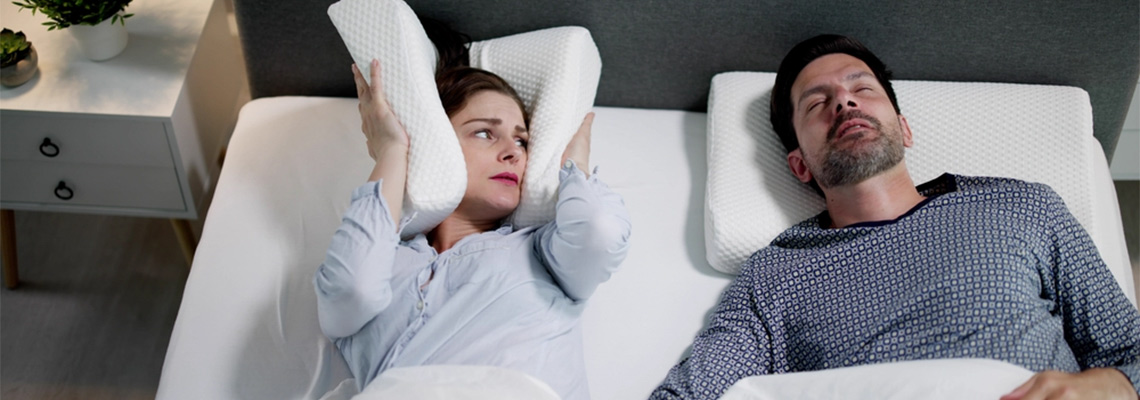Introduction
You might confuse insomnia with sleep apnea. However, both conditions are quite contrary. Insomnia is a term used to define a lack of sleep, while sleep apnea is linked to interruptions in breathing while sleeping.
One of the most important aspects of health is sleep, which can be disturbed for many different reasons. Among these interruptions, sleep apnea stands out as a widely misunderstood condition that has a significant impact on breathing during sleep. Understanding the implications for life expectancy is critical for whole health management. Let’s explore in this blog the link to sleep apnea life expectancy. However, let’s explore what untreated sleep apnea life expectancy is and how it impacts you.
Do You Know What Sleep Apnea Is?
Sleep apnea is not just an inconvenience; it’s a looming health crisis that often goes undetected. Imagine the unsettling scenario where, in the quiet hours of the night, you’re breathing repeatedly falters, halting rhythmically. These interruptions, whether brief or distressingly prolonged, stem from an airway that is either too relaxed or obstructed. This constant disruption shatters the body’s innate sleep cycle, preventing rejuvenating rest. The aftermath? Lingering fatigue that pervades the day, cognitive fog, unpredictable mood swings, and a myriad of associated symptoms. Furthermore, the shadow of sleep apnea can also cast a pall over one’s life expectancy. This condition shouldn’t be ignored, as untreated sleep apnea may lead to early death. Recognizing and addressing this condition is paramount, for the stakes are high, and untreated sleep apnea can significantly impact sleep apnea life expectancy.
Types of untreated sleep apnea
Untreated sleep apnea comes in two different types. Although both types are concerned with breathing ailments, the processes which cause the condition are different as per the type.
- Obstructive Sleep Apnea (OSA): It is the most prevalent form of sleep apnea and can usually be treated better and more efficiently than other types. Obstructive sleep apnea develops when there is physical obstruction in the airway. Mainly, the tongue, palates, tonsils, or tracheal muscles cause this blockage.
- Central Sleep Apnea (CSA): This is a less common type of sleep apnea. Yet, it is more complex to understand, handle, and treat. In central sleep apnea, breathing during sleep malfunctions due to communication hindrance. Specifically, the brain fails to signal the respiratory muscles at the right time.
Sleep Apnea and Its Silent Progression
Sleep apnea is a sneaky condition that causes more harm than good. Its unchecked progression poses a significant threat, potentially diminishing untreated sleep apnea life expectancy. The body’s vital systems, from cardiovascular to metabolic, become targets, highlighting how critical prompt intervention and awareness are.
Can sleep apnea cause death?
Usually, people do not die with sleep apnea alone. This is because, when the body stops breathing during sleep, an involuntary response occurs to wake the victim up. However, a failure of this trigger response can cause death. According to the findings of a 2023 study, 14.9% subjects with OSA and 25.1% subjects with CSA died during the 20-year medical research program.
Statics of Sleep Apnea Life Expectancy
Research decisively establishes a clear link between untreated sleep apnea and compromised life expectancy. Notably, a groundbreaking study from Yale University found that individuals with a five-year history of sleep apnea faced a 30% elevated risk of heart attacks or premature death. Furthermore, an extensive 18-year study on mortality rates revealed a disturbing trend: a staggering 40% of fatalities associated with severe sleep apnea were directly attributable to cardiovascular issues.
Additionally, the renowned New England Journal of Medicine added weight to these findings. It highlighted that sleep apnea patients exhibited a heightened vulnerability to nighttime heart attacks compared to those without the condition. Such revelations not only accentuate concerns about the immediate health implications but also cast a shadow over long-term untreated sleep apnea life expectancy.
The intensity levels of Sleep Apnea life expectancy
- Mild (5 to 15 apnea episodes): During mild episodes of sleep apnea, there is a lower risk of other chronic health disorders. This means that there is a longer life expectancy at this level.
- Moderate (16 to 30 apnea episodes): People who suffer from this level of sleep apnea, have a 70% higher risk of death as compared to healthy individuals.
- Severe (more than 30 apnea episodes): This is a level of sleep apnea which destructively affects health and life expectancy. Studies have reported that people with severe apnea encounter worst health issues before death. Some people even got cancer, seizures, and strokes. Apart from this, untreated severe sleep apnea patients have a 280% greater chance of death.
The Chain Reaction of Health Issues with Sleep Apnea
Rather than occurring in isolation, sleep apnea often serves as a trigger for a series of related health problems.
Cardiovascular Health:
As sleep apnea remains untreated, the heart’s consistent rhythm faces increasing vulnerability. This heightened susceptibility amplifies the chances of experiencing heart attacks, effectively doubling the associated risks. Moreover, the lingering threat extends beyond immediate concerns, significantly impacting sleep apnea life expectancy. In addition, this untreated condition triples the likelihood of facing premature mortality, underscoring the critical importance of timely intervention and awareness.
Stroke Risk:
Individuals with untreated sleep apnea face an increased risk of stroke. Individuals grappling with this sleep disorder confront twice the risk of encountering this severe health episode. This heightened vulnerability not only raises immediate health concerns but also casts a shadow over untreated sleep apnea life expectancy. Consequently, recognizing and addressing this condition becomes paramount for long-term well-being.
Metabolic Ramifications:
The repercussions of sleep apnea stretch beyond mere sleep disturbances, impacting metabolic health in profound ways. This condition has the potential to worsen existing health challenges, notably amplifying issues associated with type 2 diabetes. As a result, individuals find themselves navigating a more challenging path in managing blood sugar levels. This intertwined relationship between sleep apnea and metabolic disorders further underscores concerns related to sleep apnea life expectancy, emphasizing the intricate connections between sleep health and overall well-being.
Exploring Treatment Pathways
There is still hope amid the bleak picture. Even though it can be difficult to treat, sleep apnea is not impossible. Addressing it can positively help in treating sleep apnea:
Customized Sleep Apnea Mouthpieces:
These specially made mouthpieces represent the ultimate in personalized care, utilizing the latest advancements in dental technology. Crafted with minute attention to detail, they are suited to realign the jaw or clamp down on the tongue, acting as watchful guardians all night long. In this capacity, they diligently maintain an unobstructed airway. These devices are now an essential part of the all-encompassing approach to treating sleep apnea life expectancy because of their unmatched accuracy and versatility.
Holistic Lifestyle Interventions:
Beyond mere reliance on medical apparatus, holistic methodologies present an encompassing blueprint to tackle sleep apnea. Integrating facets such as weight control, quitting tobacco, and consistent exercise can markedly enhance therapeutic results. By synergizing with clinical treatments, these lifestyle modifications augment their efficacy. Consequently, this integrated approach plays a pivotal role in elevating sleep apnea life expectancy, emphasizing the synergy between lifestyle choices and medical interventions.
Also Read: Home Remedies for Sleep Apnea: 7 Effective Solutions
Sleep Telemedicine:
In an era of contemporary innovations, sleep telemedicine stands out as a monument to expansion and practicality. Patients can now connect with sleep specialists remotely, transcending geographic limitations, thanks to this innovative method. By enabling these virtual consultations, barriers are removed and the way forward for urgent actions is more evident. Not only does a seamless interface enhance convenience, but it also facilitates prompt identification and management of sleep-related issues.
Home Sleep Study:
A home sleep study emerges as a mild yet effective approach for watching and identifying sleep apnea by providing a window into one’s overnight routines. This procedure, carried out in the convenience of the patient’s own home, generates vital data that enable medical professionals to create individualized treatment plans. This approach’s appeal has grown due to its inherent combination of accuracy and convenience, positioning it as a top-tier alternative for many individuals looking to gain more insights into their sleep wellness.
CONCLUSION
Sleep apnea is a significant indicator of the delicate balance that our bodies work so hard to maintain in the broad field of human health. This disease shows how intricately related different aspects of health are to one another. It serves as a sobering reminder that even seemingly insignificant symptoms can signal hidden dangers to longevity and life itself. However, knowledge serves as our compass in these complex series of health issues. With heightened awareness and prompt intervention, individuals possess the power to reshape their rights and. In a broader scope, it augments their overall life expectancy.
However, when left unchecked, the repercussions intensify, underscoring the gravity of untreated sleep apnea life expectancy. Amidst this narrative, specialized centers like the Home Sleep Center stand as beacons of hope and expertise. Here, dedicated professionals offer comprehensive solutions, guiding individuals towards healthier sleep patterns and a brighter tomorrow.


